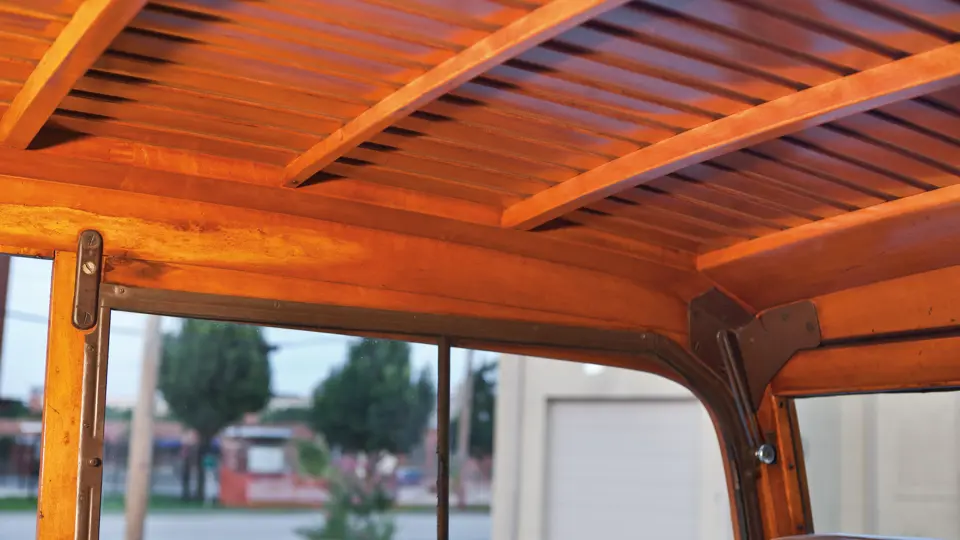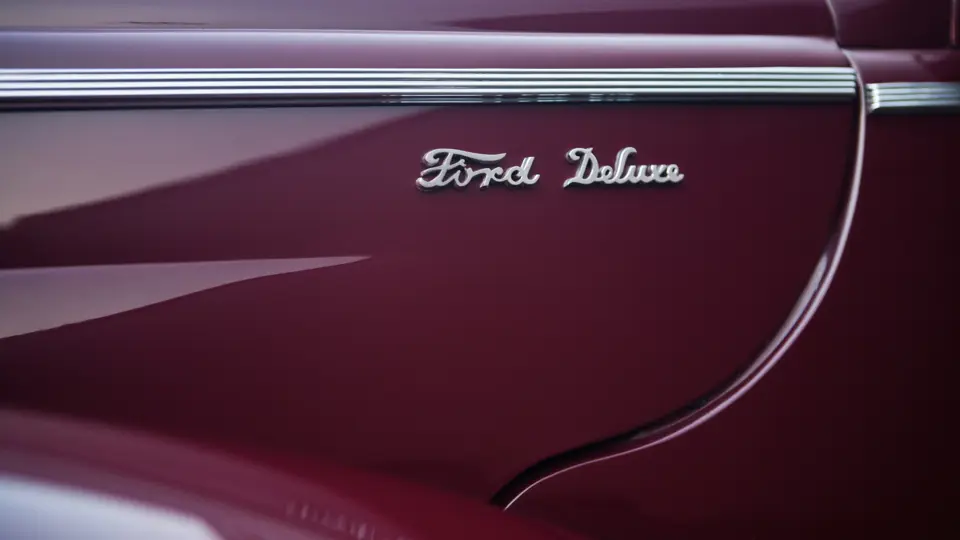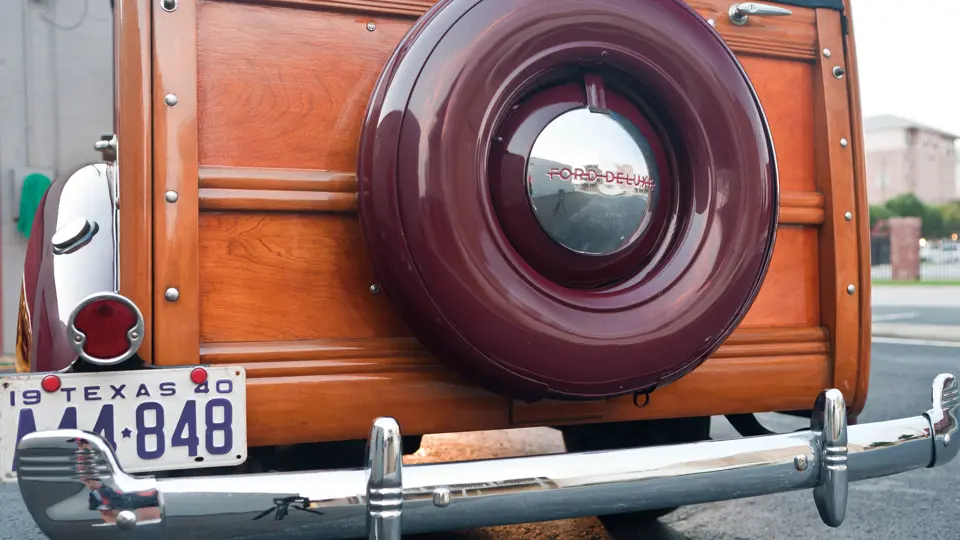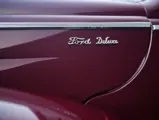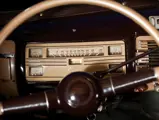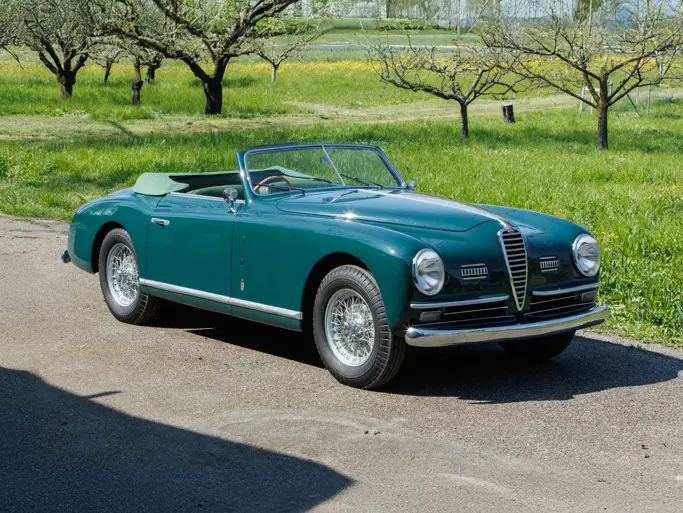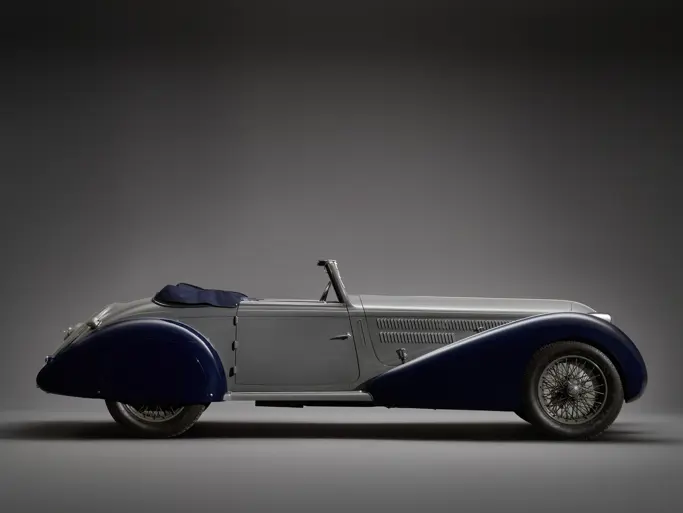Model 01A. 85 hp, 221 cu. in. flathead V-8 engine, two-barrel carburetor, three-speed manual transmission, transverse front and rear leaf springs, and four-wheel hydraulic drum brakes. Wheelbase: 112 in.
• The most desirable Ford station wagon
• Solid original wood body
By 1940, the station wagon had long been an important part of Ford’s model lineup, tracing its origins to the earliest utilitarian delivery cars and depot hacks built upon the Model T chassis. In its earliest form the station wagon was, as its name suggested, a multi-seat transporter with room for luggage and passengers to be carried to and from train stations. In comparison to other manufacturers, however, Ford built its station wagons in-house. In addition, Ford adhered to its founder’s principles by controlling the entire supply chain. The maple, ash, and basswood lumber was grown and milled in Ford’s own northern Michigan forests and mills, and by 1940, Ford’s Iron Mountain facility was nearly as integrated as the famous Rouge plant and employed thousands of highly skilled workers.
Ever since its first factory-built wagon, Ford was the leader in the market and the only entry with a V-8 engine under the hood. Combining the talented craftsmanship that went into building these wagons with the outstanding styling of the 1940 Ford is like a marriage made in heaven. With a base price of $947, it was the most expensive model in the catalogue, with just 8,730 recorded as having been built.
Purchased by a gentleman in Tennessee, this original-bodied Ford DeLuxe station wagon remains a very solid example of the iconic woodie. Believed to be a Southern example, this station wagon was refinished approximately 15 years ago, including a complete mechanical restoration. This beautiful 1940 Ford Deluxe Station Wagon will make a stylish and enjoyable addition to any collection and is a must-have for any collector of early Ford V-8s.
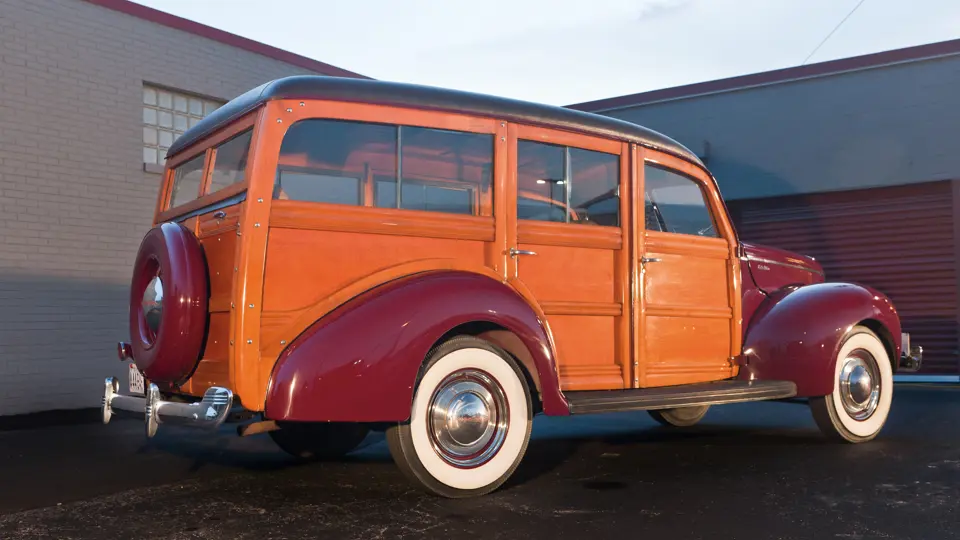



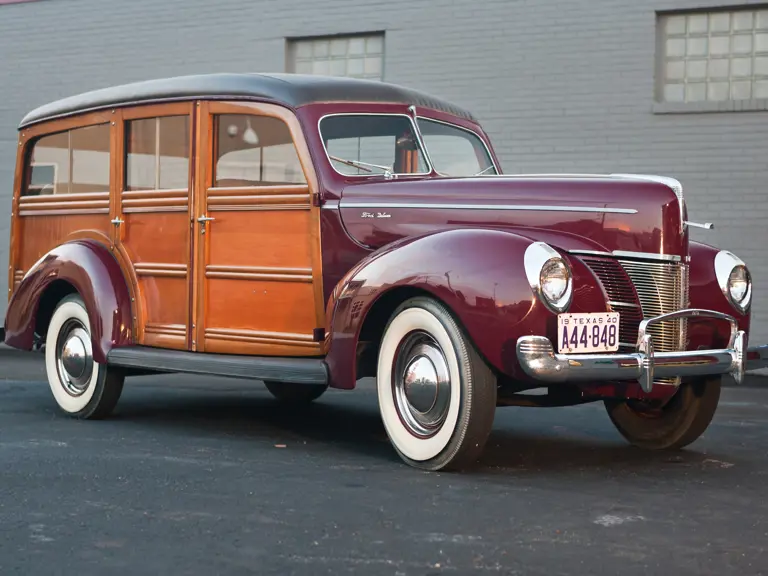


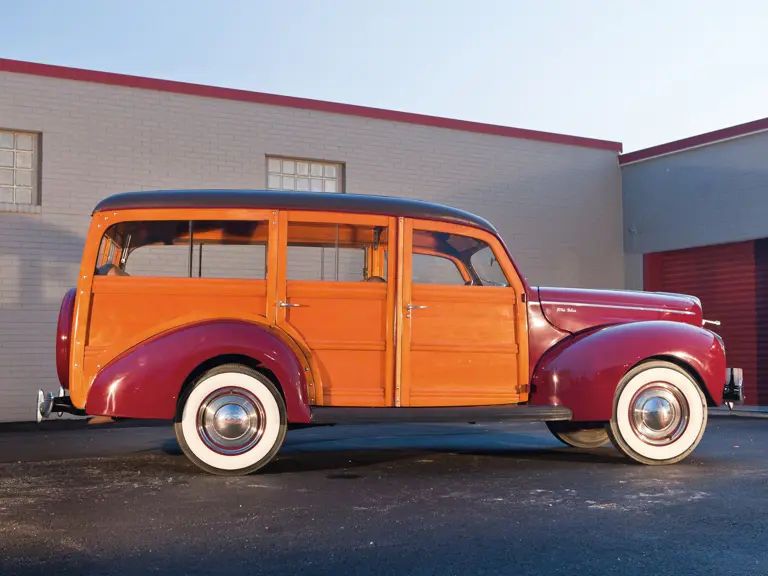
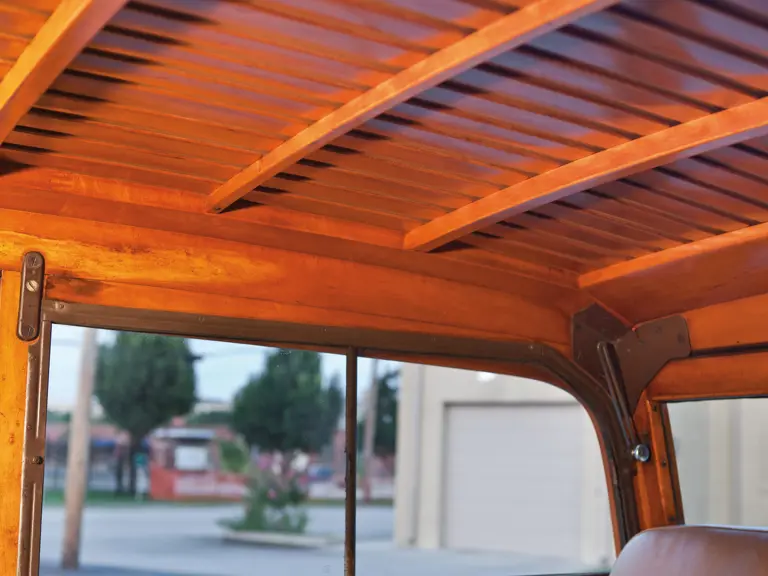
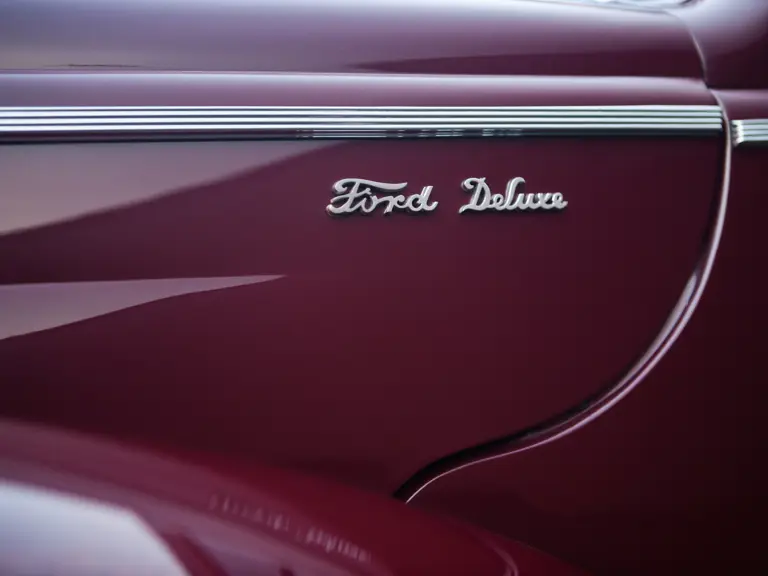
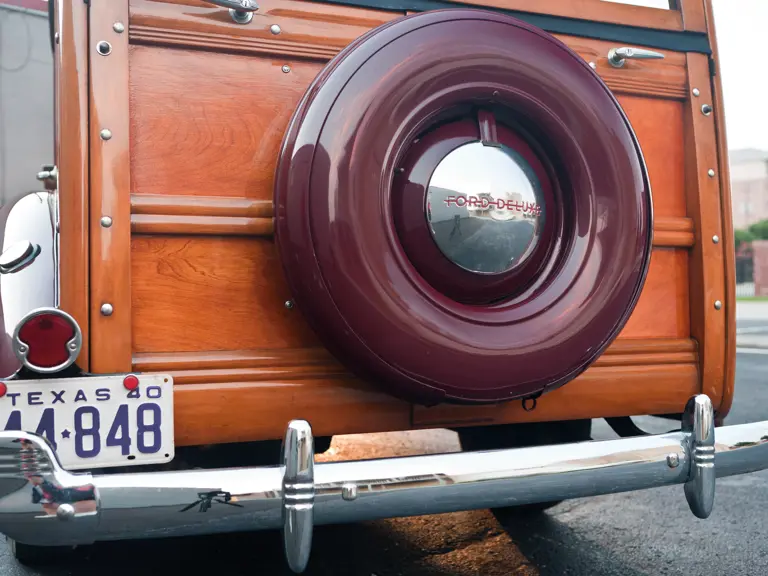
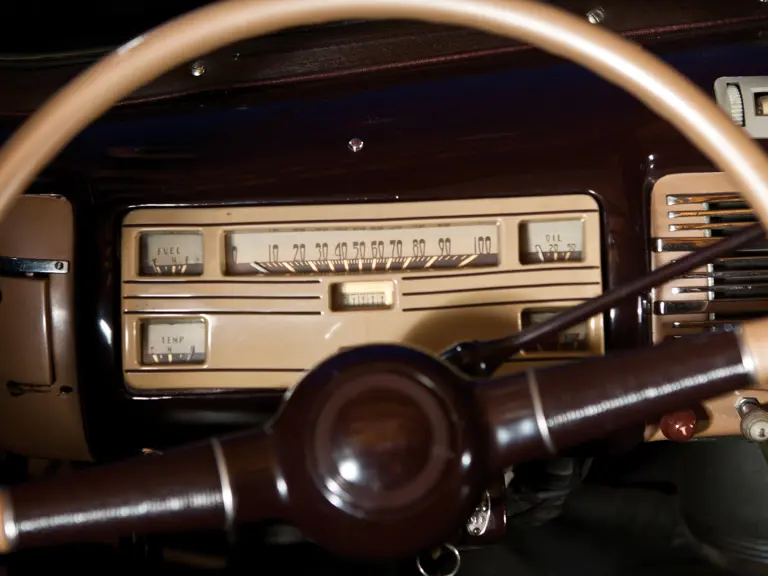
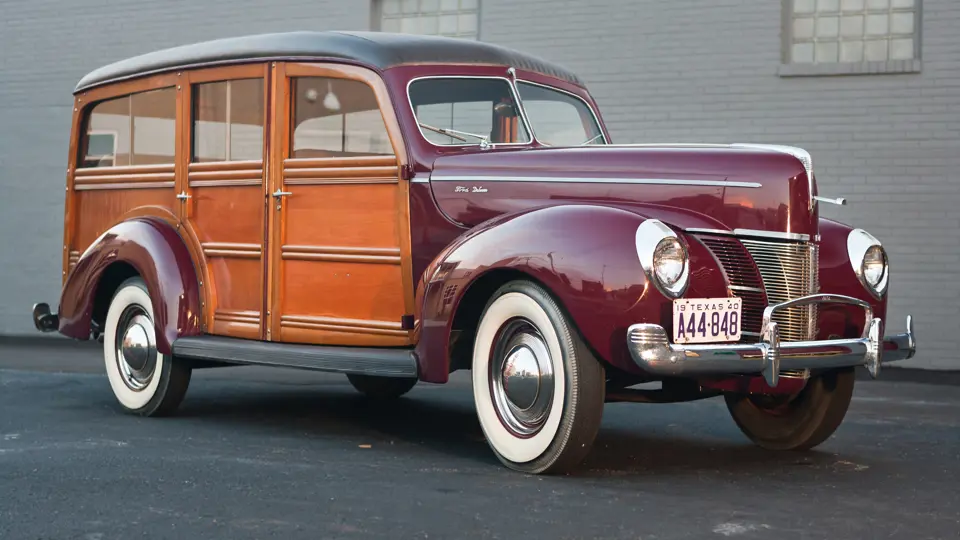
 | Hershey, Pennsylvania
| Hershey, Pennsylvania
